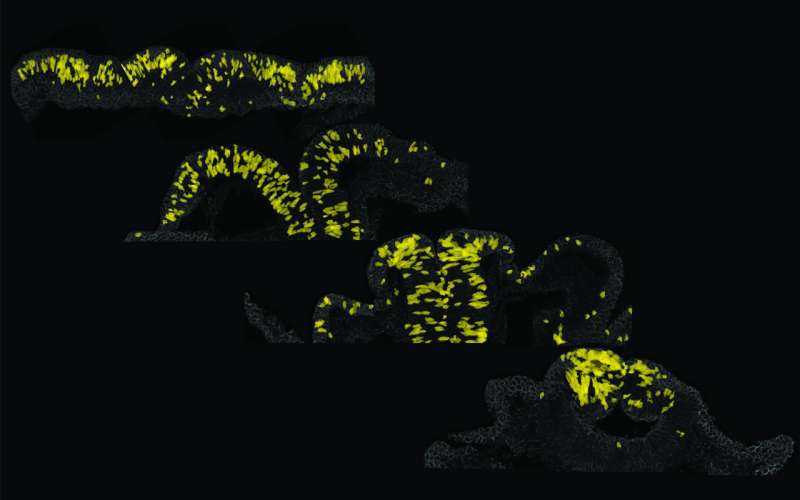This article has been reviewed according to Science X's editorial process and policies. Editors have highlighted the following attributes while ensuring the content's credibility:
fact-checked
peer-reviewed publication
trusted source
proofread
New information on the most important early stage of embryonic development

A new discovery by researchers challenges our current understanding of gastrulation, the most important stage of early embryonic development.
When the zygote, or fertilized egg, starts to develop, the forming inner cell mass, a cluster of cells that will eventually develop into the individual, retains its pluripotent stem cell potential for the first few weeks. In other words, every cell in this cluster has the ability to form an entire new individual and all of the hundreds of different cell types that the human body needs. The potential of stem cell therapies is based on this pluripotency of early embryonic stem cells.
Gastrulation is a crucial stage in embryonic development where this pluripotency is lost and the germ layers of the embryo (ectoderm, mesoderm and endoderm) and the three body axes of the developing body (anterior and posterior, dorsal and ventral, left and right) are formed. In fact, gastrulation is often referred to as the most important stage of life, with a large share of early miscarriages resulting from unsuccessful gastrulation.
Researchers from the University of Helsinki and the National Institutes of Health (NIH) in the United States found that the ectoderm, one of the germ layers, does not lose its pluripotency in gastrulation after all. It also answers the long-standing question posed by developmental biologists on how the neural crest, which originates from the ectoderm during embryonic development, has such an exceptionally high stem cell potential. The study is published in the journal Nature Communications.
Following gastrulation, the neural crest develops into a large number of cells that form various parts of the body. To name a few, tissues derived from the neural crest include pigment cells in the skin, the entire peripheral nervous system, the bones of the face and neck, parts of the heart, and several hormone-producing cell types—in practice, cell types whose differentiation from a single germ layer should be impossible.
"Our findings shed new light on the chain of events in early embryonic development. The findings indicate that the expression stage of stem cell genes needed for the production of pluripotent stem cells continues throughout the ectoderm almost until the completion of the neural tube, a precursor to the central nervous system.
"The findings also indicate a much higher plasticity in the cell fate determination process that occurs in the ectoderm than previously thought," says Dr. Laura Kerosuo, principal investigator of the research group, a former Academy researcher at the University of Helsinki, and currently the Chief of the Neural Crest Development and Disease Unit at the NIH.
A high-resolution imaging technique, capable of analyzing individual cells, helped the researchers uncover the findings.
Previously, the research group developed this technique for the simultaneous analysis of the expression of several genes, which they modified further for this study to enable them to monitor the location of individual stem cells in the ectoderm at different stages of development following gastrulation.
"With this precise and effective technique, cell profiles can be identified on site in the original tissue. The technique can be applied to any question, such as comparing sick and healthy tissue," says Doctoral Researcher Ceren Pajanoja from the University of Helsinki.
Neurocristopathies, or disorders originating from the neural crest, account for roughly one-quarter of all congenital developmental disorders. The new knowledge gained from this study helps to reveal the pathogenetic mechanisms of neurocristopathies and identify the gene defects that cause them already in early pregnancy. The study can also help in developing alternative therapies that could in the future be applied to the fetus during pregnancy.
Cancers originating from the neural crest include melanoma and neuroblastoma, an often fatal disease in infants, which Dr. Kerosuo's research group is also investigating from the perspective of neural crest development.
"It has only recently been realized how important it is to understand the normal development of the original tissue to find out what went wrong when the cancer was activated," she says.
In addition, techniques for the differentiation of neural crest derived tissues from stem cells hold great promise for usage for future tissue replacement therapies.
More information: Ceren Pajanoja et al, Maintenance of pluripotency-like signature in the entire ectoderm leads to neural crest stem cell potential, Nature Communications (2023). DOI: 10.1038/s41467-023-41384-6
Journal information: Nature Communications
Provided by University of Helsinki




















